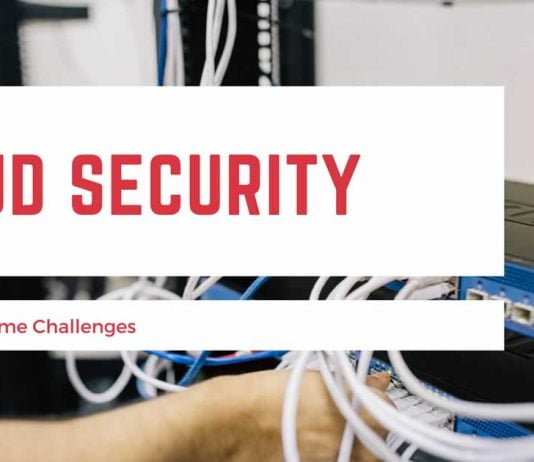As more and more businesses and people have started embracing everything that the internet offers, cloud technologies have almost become inseparable from our daily lives.
From personal photos to sensitive company information, a lot of data is stored, shared, and passed across cloud solutions.
Cloud solutions are deployed for various applications in varying degrees ranging from full-fledged cloud infrastructure, hybrid models to the private cloud, allowing companies to carry out their business operations from anywhere and anytime.
But there is always the concern of security when one starts using cloud services. Cloud by nature puts your data into remote machines, which in itself can be considered an implied vulnerability.
Top cloud security concerns such as data loss and leakage have been the major reasons why some companies are still reluctant to go for a full-fledged cloud solution. But all of the cloud security challenges can be overcome with a proper security framework, policies, and security awareness.
A report by McAfee states that customer fault is the foremost reason for about 99% of cloud security failures. So, being proactive and taking the necessary precautions could largely save from any security attacks.
Here are some ways to help you prepare to meet the security challenges you may face when adopting a cloud-based solution.
Contents
Common Cloud Security Challenges And Issues
Identify the common security challenges and devise the right course of action with the help of an IT company to overcome them.
Some of the common security issues you may face include:
- Data loss and leakage
- Data compliance violations
- Low cloud environment visibility
- Loss of control over the cloud environment settings
- Lateral attack spread
- Complicated security procedures and solutions
- Notifying affected stakeholders in case of a security breach
Most of the above-listed cloud security challenges can be overcome by having a solid security plan and simplified cloud vendor management.
Some tips to help you keep things less complicated are:
- Try to make use of unified cloud solutions rather than splitting up your cloud applications across multiple vendors.
- Make sure your SLA contains clarified terms with regards to the visibility of the cloud environment.
- Also, make sure your security SLA meets the cybersecurity standards and offers proper remedial actions in case of service disruptions.
- Establish a point of contact or a responsible person to take care of security control actions post a data breach.
- You also need to weigh in the security capabilities of your vendor before choosing them. Check their security preparedness, compliance standards, and ability to match up to your cybersecurity architecture.
Cloud Security Controls
Cloud security can be broadly termed to denote all kinds of practices, controls, tools, and technologies you will use to secure your cloud applications. It can be classified into three categories such as:
Preventative Controls
The measures you take to prevent a security incident from happening. This includes minimal exposure, dealing with known vulnerabilities, and the use of tools like firewalls, encryption, and safe usage policies.
Detection Controls
These measures are taken to detect any suspicious activity and involve monitoring and assessing the various data networks in your cloud systems.
Solutions like security information and event management solutions, anti-malware applications, network monitoring and scanning tools, intrusion detection mechanisms are part of detection control.
Corrective Controls
These controls are devised to take corrective action once security is compromised. These include backup plans, malware removal tools, and security incident response systems.
Ensure you have a strong security framework focusing on all three types of security controls to take the right action throughout your data operations.
Cloud Security Best Practices
Look out for the common security pitfalls and make sure you have a solid plan to tackle any security incident if it occurs. Here are some tips that can help you.
- Make sure your cloud configuration is flawless. Misconfiguration is often the culprit behind many security vulnerabilities. Train your employees on the right ways to use cloud solutions and the optimal security settings they should be operating on.
- Enable encryption by default. Encryption could add an extra layer of protection even if your data were to be intercepted by a hacker. So make it a practice to keep your data always encrypted.
- Make use of Identity and Access Management (IAM) solutions for effective security architecture. IAM solutions that make use of the LDAP protocol are especially a good fit for hybrid cloud models.
- Make use of automated monitoring and reporting solutions to keep an eye on your network and cloud solutions. You can also employ AI and ML-powered tools to help optimize your alerting systems.
Choosing your security strategy can be an ongoing process that you will have to revisit time and again and optimize.
Keep your systems up to date with all the latest security patches and keep yourself informed of all things related to the cloud security landscape.
And most importantly, when in doubt, do not hesitate to seek IT support from experts.


